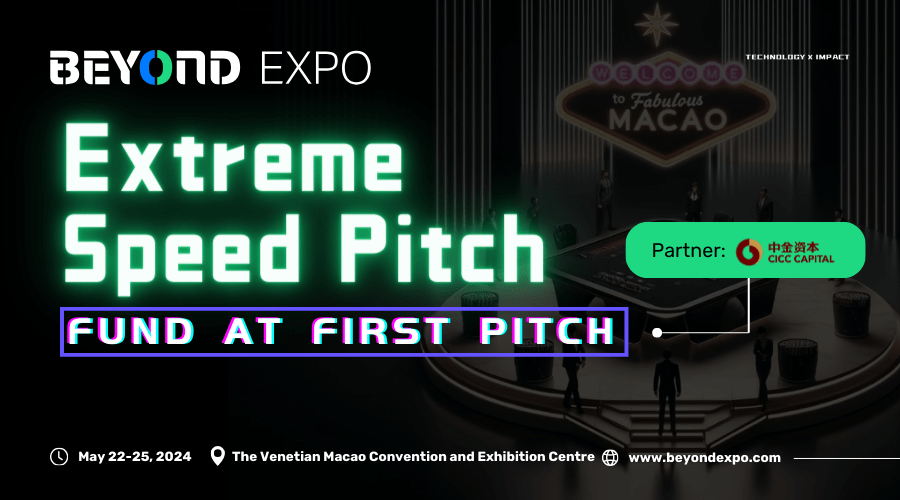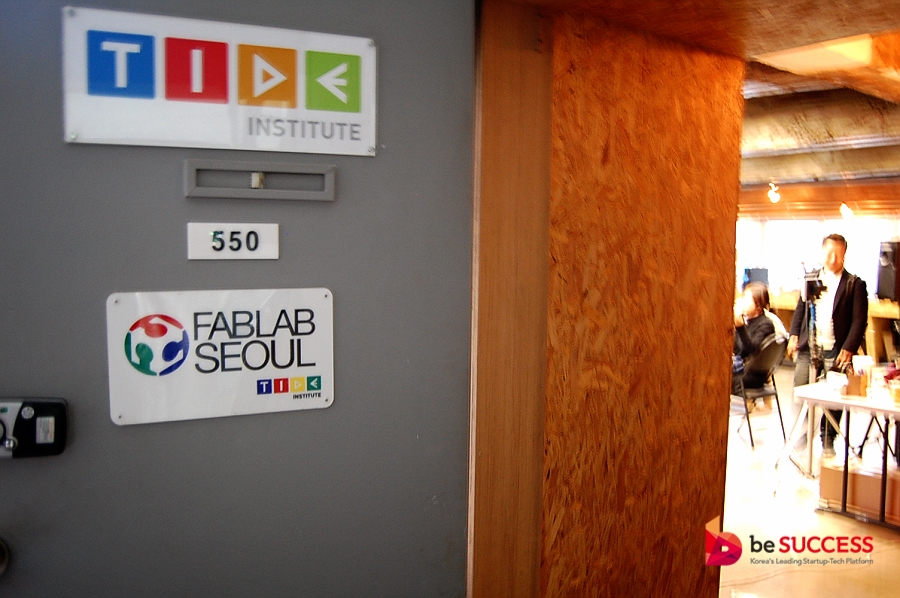There are many co-working spaces where start-ups can build their prototypes. The government is continuously building new places as well. The only problem is, people don’t know they exist.
If you open room #550 of Seun Arcade, a whole new world appears. From 3D printers to large-size laser cutters, it sure does looks like an ex-astronaut’s office. Astronaut San Ko founded TIDE Institute, an organization supporting tech-based start-ups three years ago, becoming a venture businessman. When he studied in the US, his experience of the Maker movement and birth of tech shops in the Silicon Valley became his life turning point. Now individual producers or hardware start-ups can make prototypes at Fab Lab located at Seun Arcade #550, just like using a library.
It’s not that there aren’t any prototype production spaces…
Co-producing spaces like FabLab are essential for hardware start-ups to grow. China, ‘The World’s Factory’ is giving birth to innovative hardware start-ups based on their strong manufacturing infrastructure. Worldwide hardware start-up specialized accelerator HAXLR8R and Highway1 have their headquarters in Shenzhen, China. On the contrary, the problem of Korea’s hardware startup’s weak infrastructure is already an old issue.
When asked the question “How are Korea’s tech shops these days?”, he replied that TechShop is a brand name, so the general term should be used as open maker space or co-maker space. He pointed out that the general term of bandages is now ‘Daeil band’, which originated from and actual bandage brand. In reality, there are various branded co-maker spaces abroad such as FabLab and HackerSpace.
He also pointed out that there are many prototype making spaces in Korea, but not a lot of them are known to the public. There are 17 spaces that are quite large, and including the smaller government operated Infinite Imagination Spaces, there are over 50 maker spaces. They are scattered all over the country, so anyone who has needs can access a maker space. Then why is it that these spaces remain unknown to many people? Following are the three reasons:
Space is there but nothing else: Education, hub, and information.
The first point CEO San Ko mentioned is ‘the lack of educational programs.'
Having space and equipment doesn’t do anything. The key to operating space is who runs what programs. From basic equipment instructions to providing a community, there needs to be education for start-ups so they can use the space as intended and practically.”
Because of this reason, Tide Institute operates four types of educational programs. ‘Tide Academy’ for start-up founders, ‘Tide Workshop’ for practical prototype production education, a three-day-and-night-long start-up competition called ‘Start-up Springboard’, and ‘Tide Insight’, a lecture series for the public. San Ko plans to establish FabLabs all over the country and foster operational managers for each branch. Another plan of his is to develop various educational contents and spreading them.
The second problem is ‘lack of a hub’ that strings maker spaces in the country altogether. The lack of a hub is the case for some countries abroad as well. However, at least famous brands such as TechShop, FabLab, and HackerSpace have information of each branch, such as the location and equipment status, on their brand website. On the contrary, in Korea it is almost impossible to know who operates what maker space and the names are all different, making it hard to know the current status.
“Korea has competitiveness in manufacturing but doesn’t know how to take advantage of it,” said Jaesun Han, CTO of FuturePla, a tech start-up accelerating organization.
“There are small & mid-sized manufacturers in Korea as well. It is very important to gather all the information on one platform, for people to see it. Letting people know the information of what level of products can be made at each space is also relevant.”
The last problem that comes naturally is ‘the lack of information’. When you access a website of any Korean maker space, visitors cannot know what kind of equipment that the space has. BeSuccess came to hand with five staff members' contacts of one maker space that a government agency runs. However, when calling each of them, no one gave us any information about the equipment. Even with the contact numbers and the website address, a maker would have to pay a visit in order to know what level of product can be made.
In the case of the US’s hackerspace, anyone can find the location of all branches scattered over the world on Google Map. Users can also see information about each branch, such as the founding year, number of staff, and how active their branch is. There is a facility reservation calendar for users to book the date they need to use machines. Using this information system, users won't have to go through confusion, such as going to the tech shop when it’s closed, or getting there but cannot use any of the facility they want.
Information about making space can be accessed here.
From portals to connections with professional makers, a one-stop system needed
Korean Accelerator FuturePlay CTO Jaesun Han also added that what hardware start-up need is ‘a connection system with professional makers’.
“By watching teams produce hardware, I realized that not all problems can be solved solely through co-making space. There are many start-ups that have a concept and can make a prototype somehow, but lack the ability to move on to the next step of making a more delicate and high-level product. It is hard to find professional producers. The best scenario would be a portal that has all the information of co-making places and ultimately can match professional producers with companies.”
China was already scary, but now their hardware start-ups are growing faster more than ever. Government support programs for hardware companies are increasing year after year as if China was conscious of Korea’s atmosphere. The thing is, the approach and the kind of support for these companies should be totally different from the already saturated software market. However, the support is ‘well assorted’ with space, financial aid, and mentoring. Nothing goes beyond that.
The possibility of hardware start-up supporting programs succeeding that started because of the pressure to expand in numbers and no deep consideration of the essence and origin of the business is very low. Rather than the government directly initiating these programs, it may be wise to subsidize institutions that already are devoted to the ecosystem - making a bigger change from the backstage.








